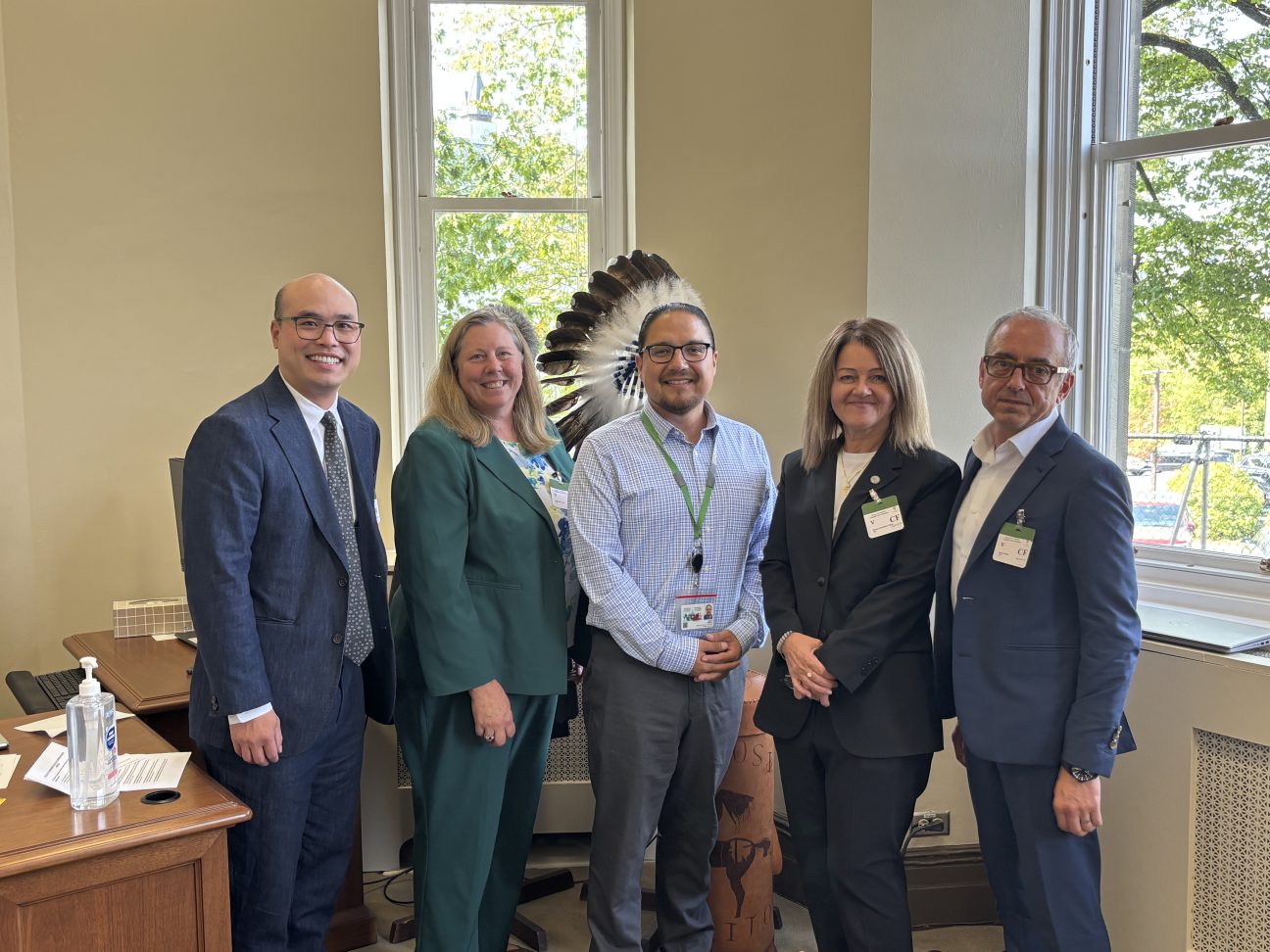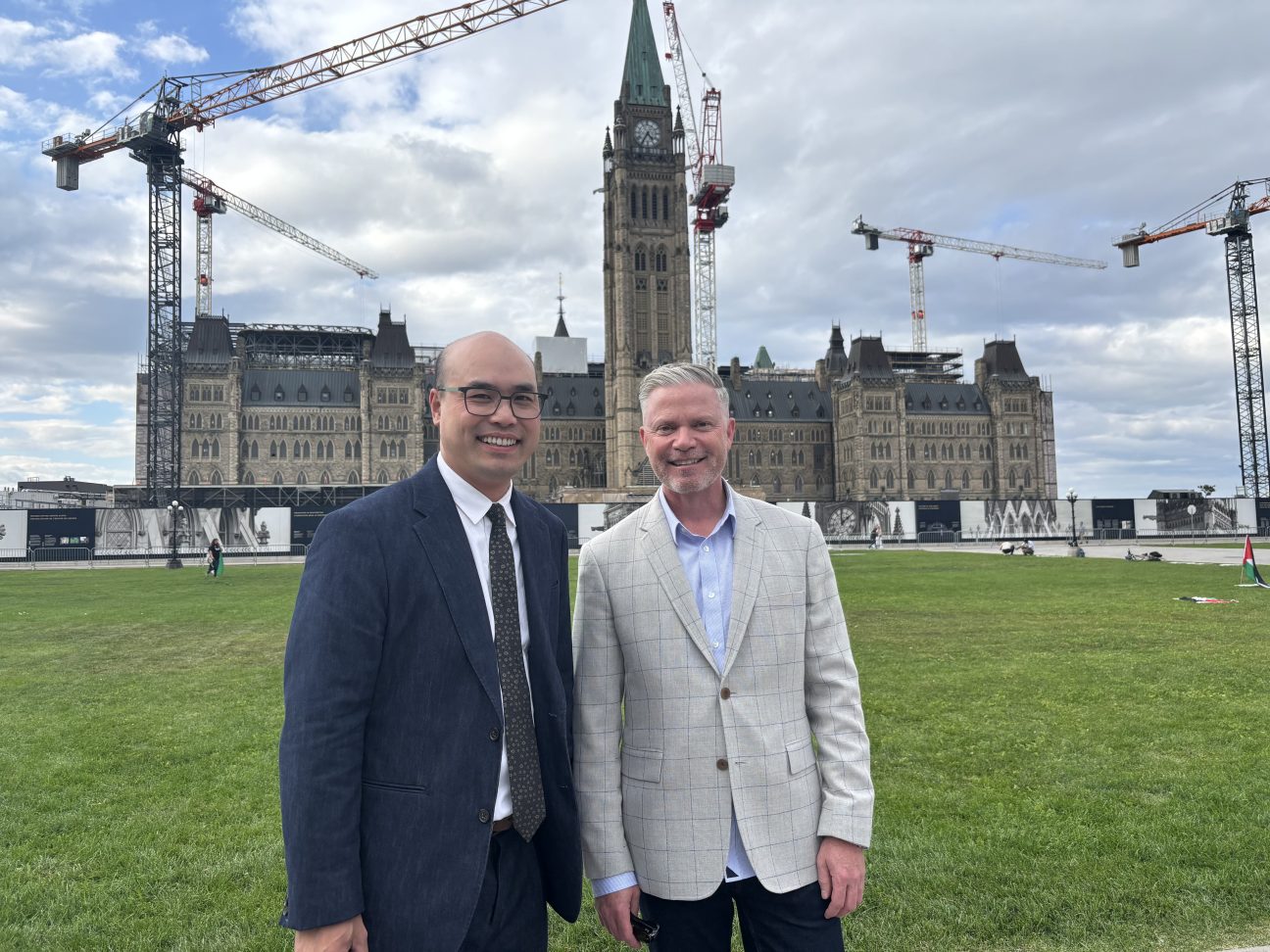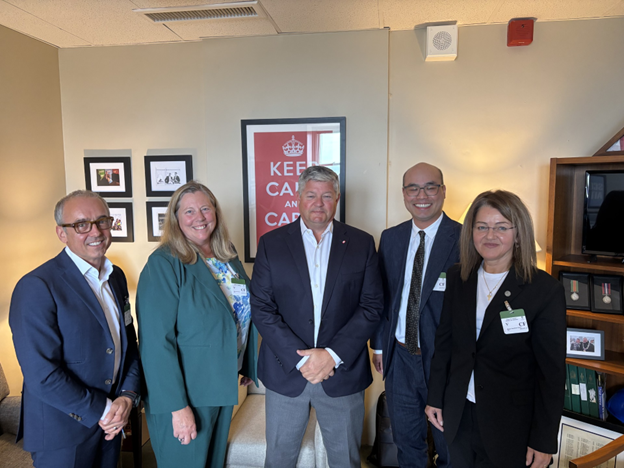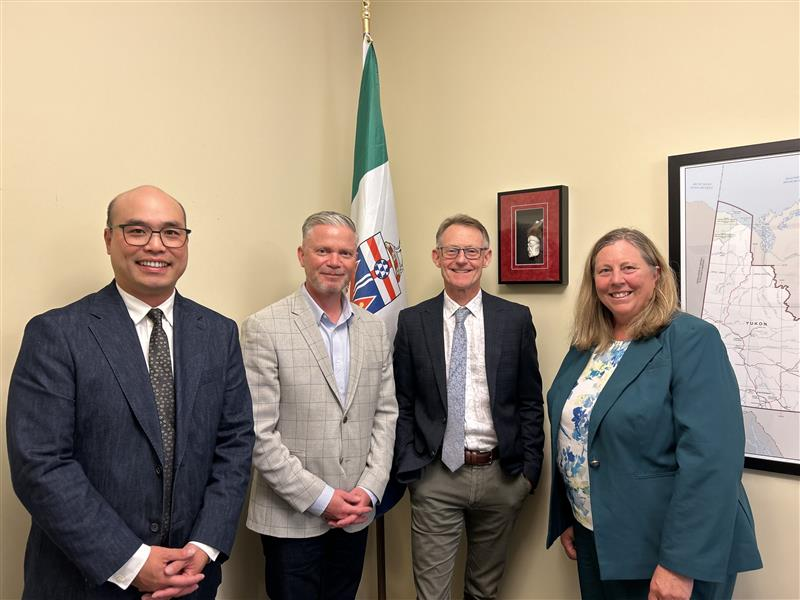By Deborah Morrison, CEO, Canadian Institute of Planners
Parliament is back in session, and for some of CIP’s board members, it was their first-ever visit to Parliament Hill. Taking advantage of an Ottawa-based board meeting, six board members divided into two teams and, over the course of a day and a half, ran the gauntlet of security screenings to attend ten meetings with elected representatives from both sides of the political aisle, as well as senior officials from key departments.
The primary goal of the meetings was to brief officials about CIP’s pre-budget submission, recommendations for Build Canada Homes, and other priorities identified through this spring’s member election survey and the summer’s National Policy Working Groups. These meetings were a crucial first step in building relationships, raising our profile within decision-making circles, and increasing awareness of the value of professional planners.
A lot of political ground was covered in those meetings. We advocated for a restoration of land use and urban planning to expedite entry for immigration to Canada, aiming to help alleviate the shortage of planners. This is particularly important considering an anticipated increase in development activity at the federal level.
In the area of housing, we emphasized the need for the federal government to focus its own investments on increasing the supply of non-market and supportive housing, while also encouraging the government to address the cost of housing through tax credits and other incentives to both prospective homeowners and developers.
CIP provided a concrete example of how we could collaborate to reduce delays and duplication of effort across municipalities through the development of an AI-driven national repository of land use plans, zoning, and by-law assessments. This would provide communities with comparative data from other jurisdictions across Canada.
We also discussed the skills and expertise that professional planners offer to support communities impacted by potential major nation-building projects. CIP has proposed a national planning advisory service and a youth corps that we are willing to coordinate to provide advice, support, and resources to rural, remote, and Indigenous communities.
Board members were received warmly by Parliamentarians and senior officials. Many took the opportunity to ask detailed questions about the work of planners. Peter Fragiskatos, Parliamentary Secretary to the Minister of Immigration, Refugees and Citizenship, expressed appreciation for the long-term perspective that planners take—one that is sometimes overlooked by others engaged in development work. All were receptive to the idea of a national repository of plans, zoning, and by-law amendments. Scott Aitchison, Shadow Minister for Housing and Diversity and Inclusion, reacted by saying that he is in support of anything planners can do to accelerate the process; he encouraged planners to simplify processes wherever they could, and not be reticent to “hold their ground” in defending their proposals to councils.



Every meeting touched on the Canada Major Projects Office and its potential impacts on rural, remote, and Indigenous communities. It was clear that there was bipartisan alignment on this; many believed that these were unprecedented times to invest in long-term economic growth and opportunities. Many officials noted they were thinking about the issues planners grapple with every day—community engagement in the process, assessing infrastructure and service needs, and mitigating climate, social and cultural impacts. The Honourable Buckley Belanger, Secretary of State for Rural Development, acknowledged the vital role that planners will play in realizing the federal government’s ambitions for major projects, stating, “If you want to do something right, you have to plan it right.”



The next steps in our government advocacy will be to follow up with the officials leading Build Canada Homes and the Major Projects Office to explore how best CIP and professional planners can support these initiatives. This could take the form of further development of the above proposals, convening planner consultations on behalf of department officials, and/or by offering members education and training about new federal policies and programs as they are announced.
Planners can help realize the full potential of federal investments by creating certainty, fostering opportunities, and accelerating economic growth through resilient community design. We invite members interested in getting more involved with advocacy and policy work to contact us and identify their areas of specialization.
